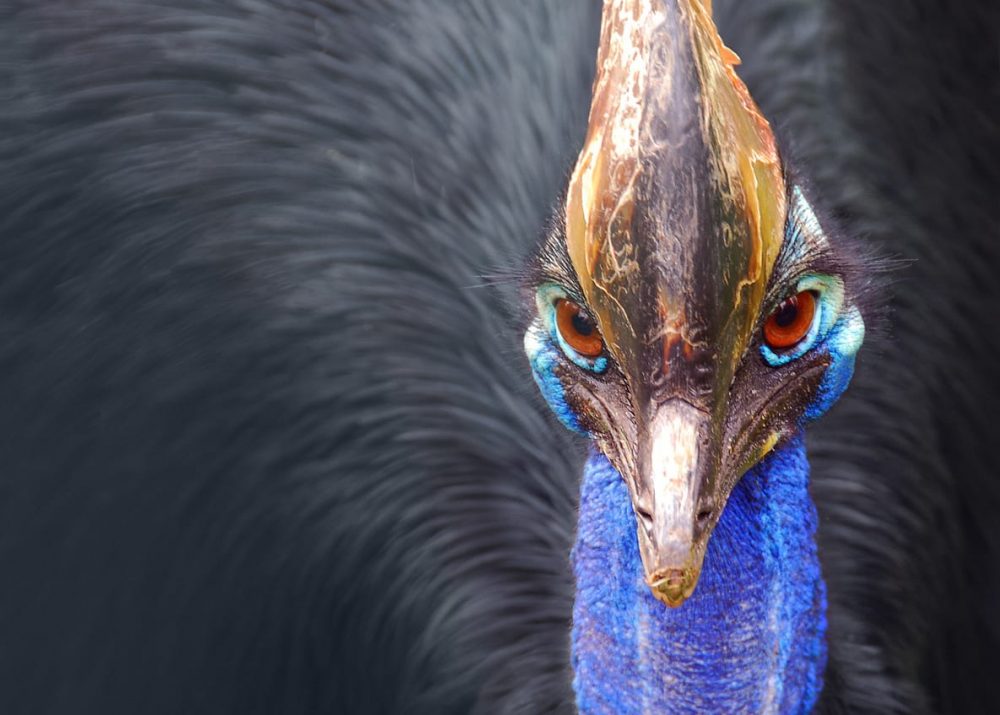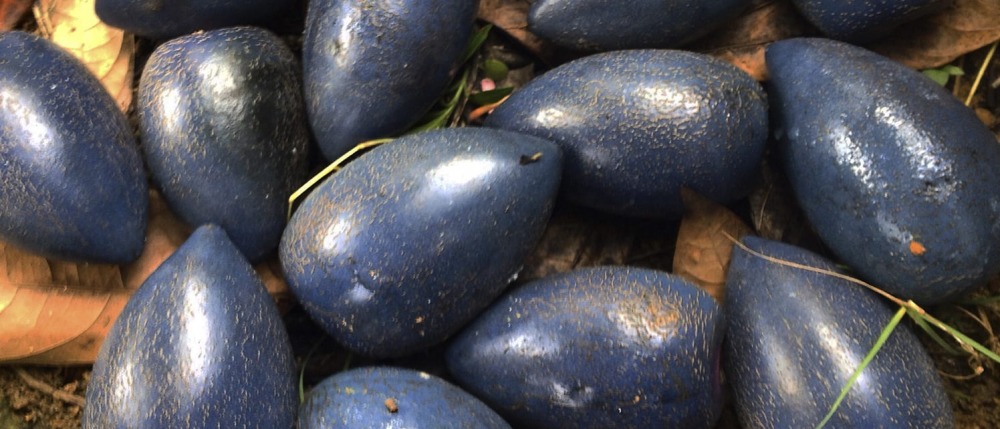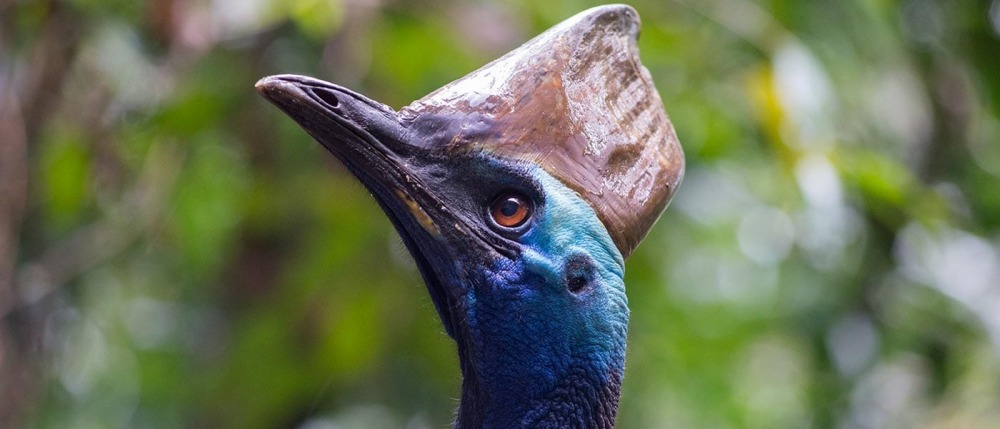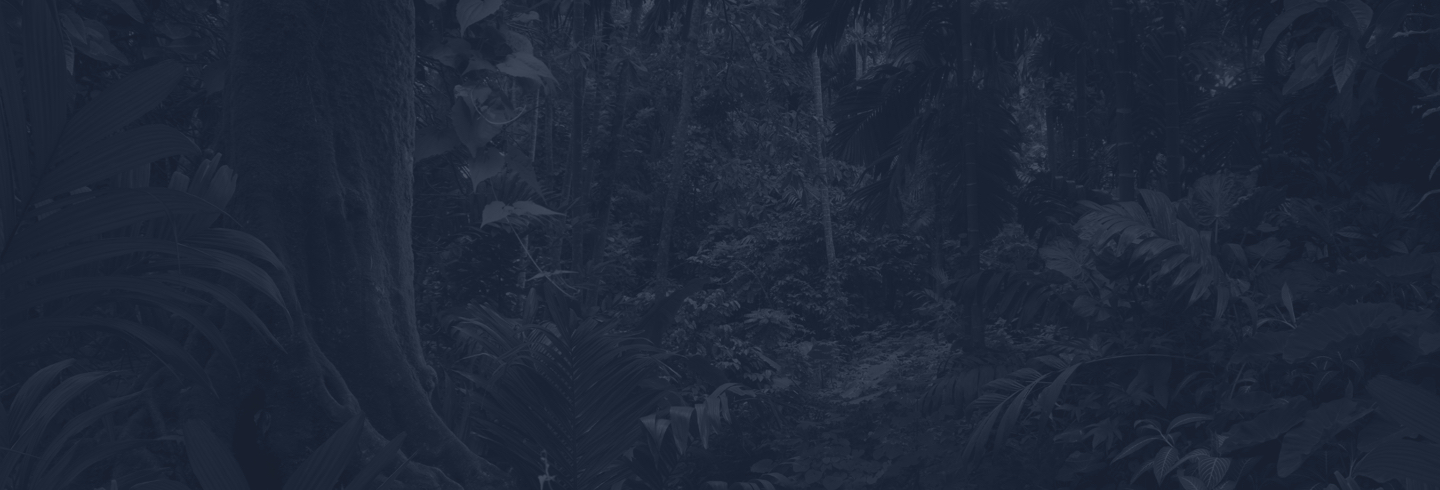Seven Things You (Probably) Don’t Know about the Cassowary

There’s no question the cassowary is an iconic bird. As tall as a person with a high helmet (casque) on its head and a bright blue neck with touches of red, it’s also easy to identify. But due to habitat decline, the bird is becoming harder and harder to spot in the wild.

1. The purpose of the cassowary’s helmet, or casque, is still unknown
Researchers say it may indicate dominance and age as it continues to grow throughout the bird’s life. Some research also suggests it could assist cassowaries in ‘hearing’ the low vibrating sound made by other cassowaries and may also act as a shock-absorber that protects the bird’s head as it pushes through dense rainforest and scrub thickets.
2. They really are big birds
Cassowaries are the third tallest bird in the world with an adult standing up to six feet tall. And they’re heavy. The sexes are similar in appearance, but females are slightly larger. They have been recorded to weigh as much as 167 pounds (76 kilograms), but average around 104 pounds (47 kilograms). Males average around 84 pounds (38 kilograms).

3. Cassowaries are solitary, except when they mate
Generally cassowaries are solitary birds, only coming together to mate during the breeding season which runs from around May or June to October. Cassowaries don’t form permanent bonds or mate for life, and the females may mate with several male cassowaries in a breeding season. In doing so, the female bird will produce several nests, laying clutches of three to five eggs by different fathers.
4. When it comes to cassowaries, dads rule the roost
Once the eggs are laid, it is the male’s sole responsibility to incubate the eggs, a process which takes around 50 days. Once the eggs hatch, males raise the chicks for an additional nine months. The father teaches the young cassowaries, which have distinctive stripes, to forage. They become independent around nine months of age and reach maturity at around three years.
5. Rainforests need cassowaries
Cassowaries are frugivores and eat fruit that has fallen to the ground. The birds are considered ‘keystone’ species because of their role as a major seed disperser of up to 238 rainforest species. Without cassowaries, those rainforests would not be able to survive. It is estimated that up to 100 plant species depend entirely on cassowaries to disperse their seeds.
In some cases, cassowaries are the only bird to be able to digest certain fruit, such as the vivid Cassowary Plum (Cerbera floribunda). It contains a sap poisonous to humans and most other animals. The cassowary’s unique digestive system – which is short and fast – and its stomach, which contains a rare combination of enzymes, allows it to digest the fruit. The Cassowary Plum is an important food source for the cassowary and the bird, in turn, distributes and helps germinate the seeds. When fruit is scarce, cassowaries have also been known to eat snails and small, dead mammals.
6. They can do serious damage to people and other birds
People who live in cassowary territory have a healthy respect of the big bird. Their heavy, muscular legs have three toes and each toe bears a large claw up to 0.79 inches long, shaped like a dagger and used for fighting and scratching. In the wild, cassowaries are mostly shy, avoiding contact with people, but male birds can be aggressive when defending their chicks.
7. Cassowaries are in serious trouble
In 1998 Queensland’s Wet Tropics adult population was estimated to be up to 2,400 cassowaries strong. But by 2001 scientists believed that only 1,200 to 1,500 wild cassowaries existed in Australia. That figure is comparable with the number of Giant Pandas in China. More than 80 percent of coastal lowland rainforest, which is the cassowary’s prime habitat, has been cleared over the past century. Nearly a quarter of the cassowary habitat that remains has poor conservation protection. Researchers now understand the north Queensland cassowary population to be closer to 4,000 individuals.

Sign up to receive the latest updates
"*" indicates required fields

